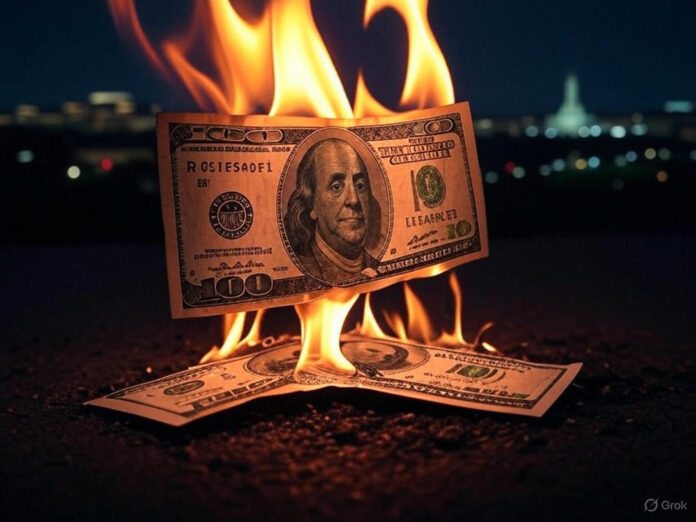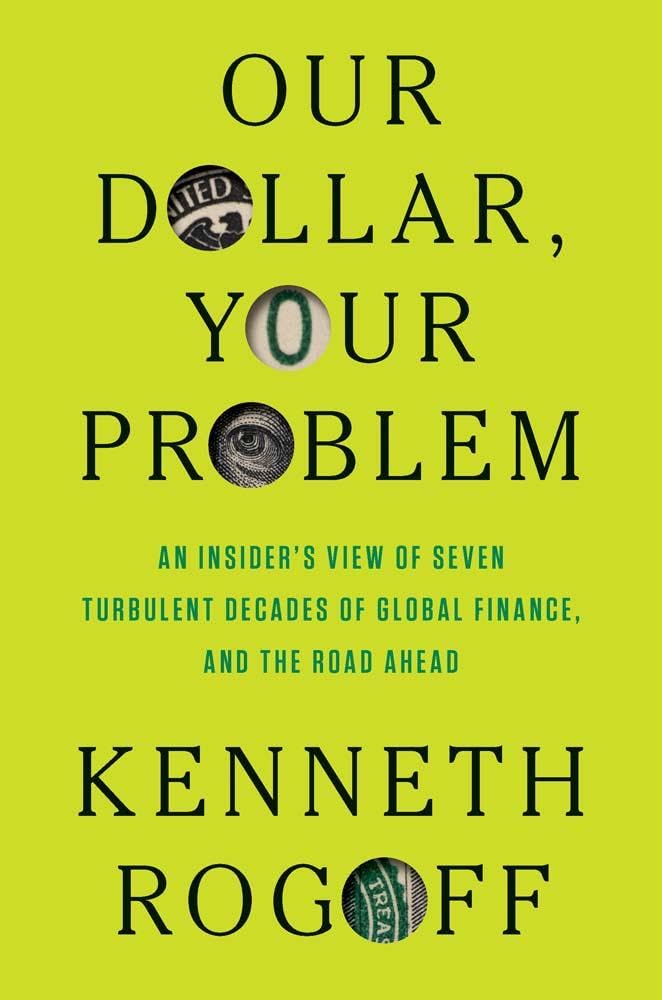Tracing the Dollar’s Decline
Ken Rogoff’s new book, Our Dollar, Your Problem: An Insider’s View of Seven Turbulent Decades of Global Finance, and the Road Ahead, delivers a sobering analysis of the American financial empire’s unraveling. Drawing on his experience as the International Monetary Fund’s former chief economist, Rogoff argues that the U.S. dollar’s global dominance is collapsing under self-inflicted wounds and international resistance. He warns, “I think we have lost trust in a way we’re never going to get it back.” The book chronicles decades of financial hegemony now jeoparding to internal mismanagement and external pressures. Rogoff’s pessimistic narrative paints a grim future for the dollar’s once-unassailable status.
Foundations of Financial Power
Rogoff traces the dollar’s ascent to its post-World War II role as the world’s reserve currency. He writes, “Part of how we built the trust early was the dollar was good as gold.” The Bretton Woods system solidified this trust, making the dollar indispensable for global trade. This dominance granted the U.S. lower borrowing costs and unmatched financial leverage. However, Rogoff contends that sustaining this trust demanded prudent stewardship, now eroded by recent policy missteps.
The Privilege and Its Price
The book details the “exorbitant privilege” of dollar dominance, which Rogoff sees as a double-edged sword. He notes, “Because of it, our borrowing costs are lower… we know things about the global economy nobody else knows.” This power enabled the U.S. to borrow cheaply and wield sanctions effectively. Yet, Rogoff argues it also fostered global resentment among nations tethered to America’s financial system. This discontent, he suggests, sowed seeds for the dollar’s current decline.
Early Challenges to Supremacy
Rogoff examines historical threats to dollar dominance, from Japan in the 1980s to the European Union in the 2000s. He observes, “There have been challenges. Japan in the 80s, the EU in the 2000s, and now China.” While these efforts failed to topple the dollar, they revealed its vulnerabilities. Rogoff highlights how nations like China began questioning their reliance on a U.S.-controlled system. These early fissures, he argues, prefigured today’s more serious challenges.
Pre-Trump Strains and Flaws
Before recent upheavals, Rogoff identifies growing global frustration with U.S. financial tactics as a critical turning point. He states, “Everyone hates it. Obviously, the Russians and Chinese hate it, but the Europeans hate it.” Sanctions, like freezing Russian assets, alienated allies and adversaries alike. Internally, Rogoff points to rising debt and threats to Federal Reserve independence as weakening the dollar’s foundation. He warns, “Where I saw the biggest problem was inside ourselves, Federal Reserve independence… debt, the view that it’s a free lunch.”
Trump’s Role in Hastening Collapse
Rogoff’s book sharply criticizes the Trump administration’s policies for accelerating the dollar’s downfall. He asserts, “The tariffs were just the dumbest thing, the most incompetent thing… It’s the whole chaos.” Unpredictable tariffs disrupted global trade, shattering confidence in U.S. leadership. By demanding payments for dollar access, the administration alienated partners. Rogoff argues this chaotic approach has driven nations to seek alternatives, undermining the dollar’s global role.
Risks to Monetary Autonomy
The book emphasizes the peril facing the Federal Reserve’s independence, a cornerstone of dollar stability. Rogoff cautions, “The worry I’m getting is that he finds a way to corrupt the Federal Reserve and he could.” Trump’s pressure to politicize monetary policy risks triggering inflation. A compromised Fed, Rogoff warns, could devalue debt through reckless money printing. Such actions would erode a critical pillar of the U.S. financial system.
Backfiring Financial Leverage
Rogoff critiques Trump’s view of dollar dominance as a burden, leading to aggressive demands on other nations. He explains, “Their theory of the case is the US financial system… are functionally global public goods… and you’re going to start paying us.” This approach, including threats of 100% tariffs, alienates trading partners. Nations now view the U.S. system as a liability, Rogoff argues. Consequently, they hasten efforts to develop alternative financial frameworks.
Market Signals of Decline
Rogoff points to recent market turmoil as evidence of the dollar’s weakening position. He notes, “The dollar was going down in value but long-term interest rates were going up… people are selling.” The surge in the 10-year interest rate reflects a sell-off of dollar assets. This divergence signals eroding global confidence, Rogoff contends. Such trends foreshadow a permanent loss of America’s financial edge.
Losing the Financial Edge
Rogoff argues that the U.S. has irrevocably lost a portion of its financial advantage. He predicts, “We may have lost a quarter%, a half a percent, just permanently higher.” Higher borrowing costs will strain an economy burdened by massive debt. The erosion of the “exorbitant privilege” limits America’s ability to finance deficits. This shift, Rogoff asserts, marks a pivotal moment in the financial empire’s decline.
Emerging Financial Rivals
As confidence in the dollar fades, Rogoff sees nations turning to alternatives, fragmenting the global financial system. He forecasts, “The renminbi is going to take up part of our market share… the euro is going to take some.” China’s renminbi, Europe’s euro, and cryptocurrencies are gaining ground. This multipolar shift diminishes the dollar’s role in trade and reserves. Rogoff views this as the disintegration of America’s financial monopoly.
A Diminished Global Presence
The book connects the dollar’s decline to a broader loss of U.S. geopolitical influence. Rogoff warns, “It will affect our national security. Our ability to use sanctions is a heck of a lot less.” Reduced financial leverage will limit America’s global influence. Intelligence gathering, reliant on financial data, will also weaken. Rogoff predicts the U.S. will struggle to maintain its dominant international position.
Economic Threats at Home
Rogoff foresees severe domestic economic fallout from the financial empire’s collapse, particularly inflation. He states, “The chances we get another inflation similar to the Biden era one or worse are very high.” Rising deficits, fueled by tax cuts and tariff uncertainties, heighten these risks. Financial repression, forcing institutions to hold government debt, could stifle innovation. These pressures, Rogoff argues, will burden American households and businesses.
A Fragmented Financial Order
Rogoff envisions a future where the global financial system splinters into a multipolar structure. He explains, “The multipolar scenario, we lose market share… It’s not in China’s, Russia’s, it’s not in Europe’s interest to have us control everything.” Nations are building alternative systems to reduce U.S. influence. This shift will create a less predictable economic order. Rogoff’s book portrays the U.S. navigating this reality with diminished power.
Reflecting on a Fallen Empire
Our Dollar, Your Problem offers a stark warning about the American financial empire’s collapse, driven by internal failures and global shifts. Rogoff concludes, “We’re talking about an inflation crisis… this loss of the dollar’s magnitude… It’s a slower burn.” His insider perspective, grounded in decades of economic expertise, lends weight to this grim prognosis. The book serves as a compelling chronicle of hubris and miscalculation. Readers are left to ponder the consequences of a world no longer centered on the U.S. dollar.


